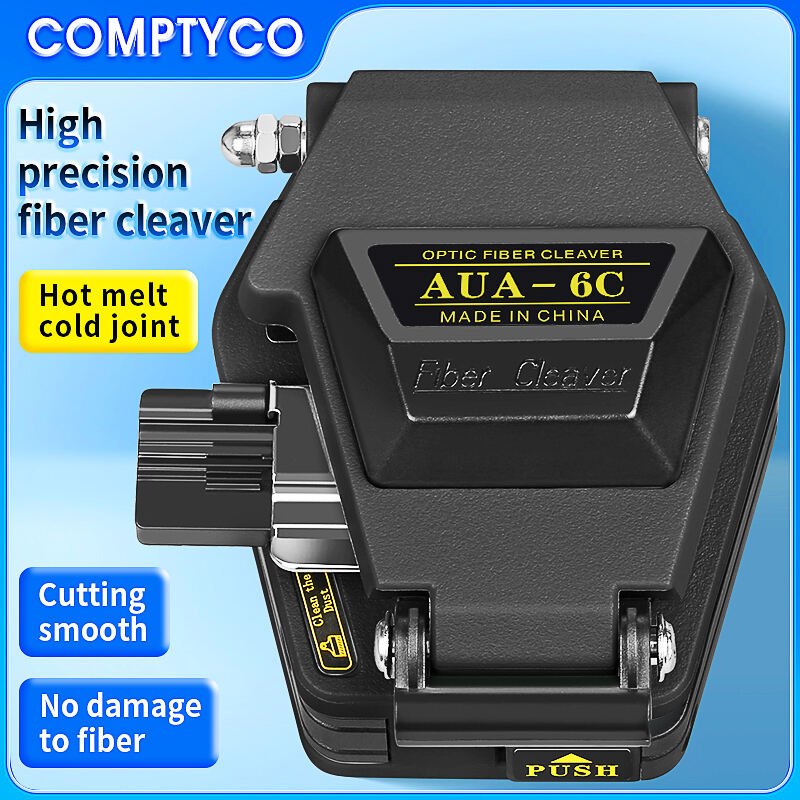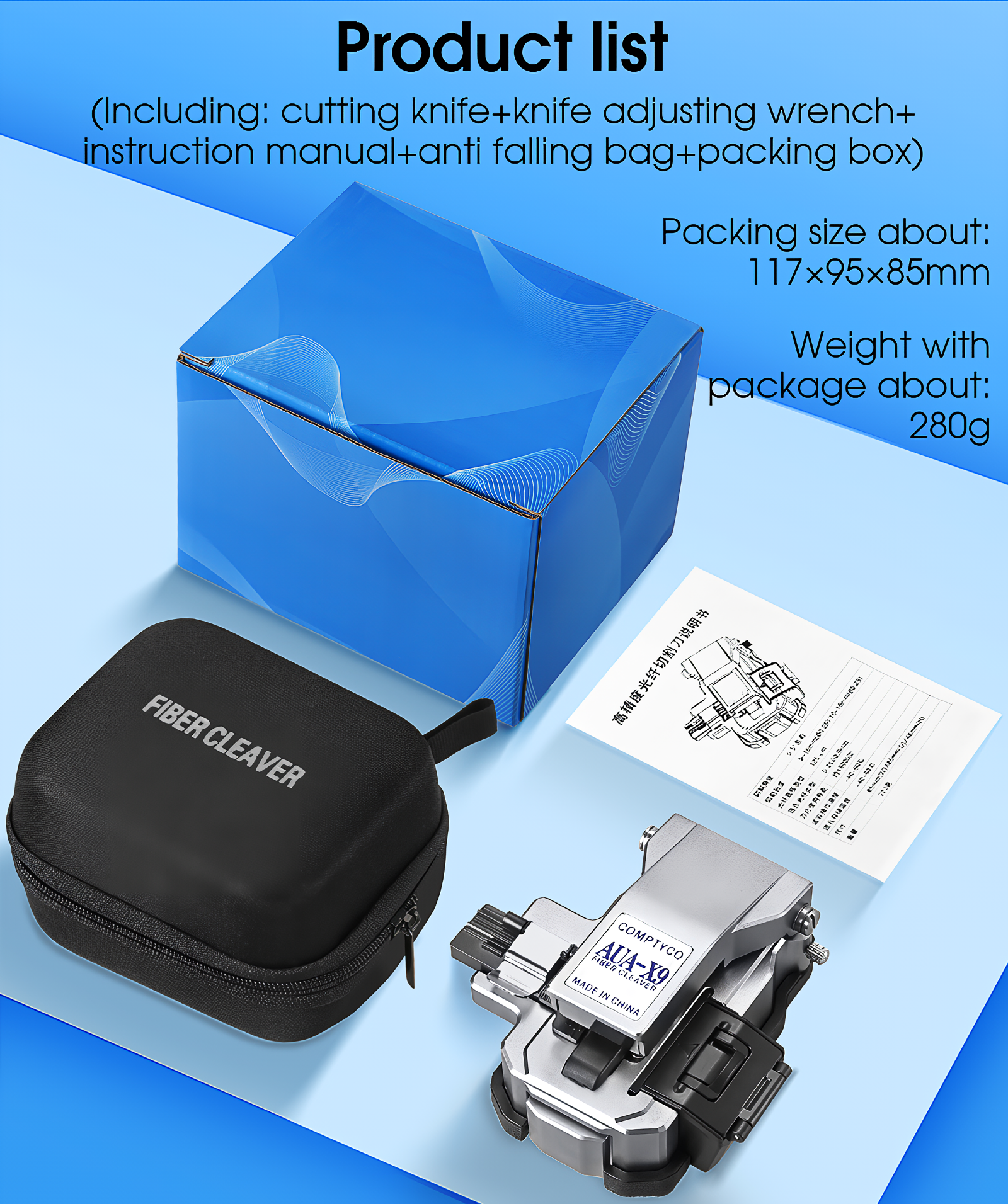The Ultimate Guide to Professional Fiber Optic Cleaving Tools
The telecommunications industry continues to evolve at a rapid pace, and having the right tools for fiber optic installation and maintenance has never been more crucial. A fiber cleaver stands as one of the most essential instruments in any fiber optic technician's toolkit. This comprehensive guide explores the leading fiber cleaver brands that are shaping the industry in 2025, offering unparalleled precision and reliability for both seasoned professionals and emerging specialists.
With fiber optic networks expanding globally and the demand for high-speed connectivity reaching new heights, the importance of quality fiber cleaving tools cannot be overstated. The right fiber cleaver can mean the difference between a perfect splice and costly rework, making the selection of appropriate tools a critical decision for organizations and technicians alike.
Leading Manufacturers in the Fiber Cleaving Industry
Premium Tier Brands
Fujikura leads the pack with their revolutionary automated cleaving systems, incorporating artificial intelligence to achieve unprecedented accuracy in fiber preparation. Their latest models feature automatic blade rotation and height adjustment, ensuring consistent results even in challenging environmental conditions. The durability of their products, coupled with innovative features like built-in fiber scrap collectors and automated cleaning systems, makes them a top choice for professional installations.
Sumitomo Electric has maintained its position as an industry leader through continuous innovation in their fiber cleaver technology. Their newest offerings include enhanced blade longevity and precision alignment systems that significantly reduce the likelihood of cleaving errors. The integration of smart technology allows for real-time monitoring and adjustment of cleaving parameters, resulting in superior performance across various fiber types.
Mid-Range Solutions
AFL has carved out a significant market share with their cost-effective yet reliable fiber cleaving solutions. Their products strike an excellent balance between functionality and affordability, making them particularly attractive for smaller operations and independent contractors. The emphasis on user-friendly features and robust construction has earned them a loyal following among field technicians.
INNO Instruments has gained recognition for their innovative approach to fiber cleaver design, introducing ergonomic improvements that reduce operator fatigue during extended use. Their models incorporate precision-engineered components that deliver consistent results while maintaining a competitive price point in the market.

Technical Innovations and Features
Advanced Blade Technology
Modern fiber cleavers employ sophisticated blade designs that maximize longevity while maintaining exceptional cleaving quality. Diamond-coated blades have become increasingly common, offering superior durability and cleaner cuts compared to traditional carbide options. Manufacturers are now implementing nano-coating technologies that prevent debris accumulation and reduce the frequency of blade maintenance.
The latest advancement in blade positioning systems utilizes magnetic suspension technology, eliminating mechanical wear and ensuring precise blade movement throughout the cleaving process. This innovation has significantly extended the service life of high-end fiber cleavers while maintaining consistent performance over time.
Automated Calibration Systems
Integration of automated calibration features represents a significant leap forward in fiber cleaver technology. These systems continuously monitor and adjust cleaving parameters to maintain optimal performance under varying environmental conditions. Real-time feedback mechanisms alert operators to potential issues before they affect production quality.
Advanced sensors now incorporate machine learning algorithms to predict maintenance requirements and optimize blade positioning based on historical performance data. This predictive maintenance approach has revolutionized how organizations manage their fiber cleaving equipment, reducing downtime and improving overall efficiency.
Performance Considerations and Selection Criteria
Precision and Accuracy Metrics
When evaluating fiber cleavers, the cleave angle consistency stands as a primary performance indicator. Top-tier models consistently achieve angles within 0.5 degrees of perpendicular, ensuring optimal splice performance. The latest generation of fiber cleavers incorporates digital angle measurement systems that provide instant feedback on cleave quality.
Surface quality analysis has become increasingly sophisticated, with advanced imaging systems capable of detecting microscopic imperfections in real-time. This capability allows operators to identify and address potential issues before they impact network performance, reducing the need for rework and improving installation efficiency.
Durability and Maintenance Requirements
Professional-grade fiber cleavers are designed to withstand the rigors of daily field use while maintaining precise operation. High-quality materials and robust construction ensure reliable performance even in challenging environmental conditions. Manufacturers now offer comprehensive maintenance programs that include regular calibration and component replacement services.
The implementation of self-cleaning mechanisms and protective coatings has significantly reduced the frequency of required maintenance interventions. Modern fiber cleavers often feature modular designs that facilitate quick component replacement and minimize downtime during routine servicing.
Cost Analysis and Return on Investment
Initial Investment Considerations
While premium fiber cleavers represent a significant initial investment, their superior performance and reliability often justify the higher cost. Organizations must consider factors such as projected workload, technical requirements, and long-term maintenance costs when selecting appropriate equipment. The latest models offer enhanced features that can significantly improve workflow efficiency and reduce operating costs.
Many manufacturers now provide flexible financing options and comprehensive warranty programs that help organizations manage the initial investment while ensuring long-term protection of their equipment. The availability of training programs and technical support services adds value to premium offerings and should be factored into the total cost of ownership.
Long-term Value Assessment
When evaluating the long-term value of fiber cleavers, considerations must extend beyond the initial purchase price. Higher-quality units typically offer extended service life and reduced maintenance requirements, resulting in lower total ownership costs over time. The precision and reliability of premium models can significantly reduce material waste and rework expenses.
Advanced features such as automated calibration and predictive maintenance capabilities can substantially reduce operational costs by minimizing downtime and optimizing resource utilization. The integration of these technologies represents a significant advantage in maintaining consistent production quality and meeting demanding project schedules.
Future Trends and Industry Outlook
Emerging Technologies
The fiber cleaver industry continues to evolve with the integration of artificial intelligence and machine learning capabilities. These advancements promise to further automate the cleaving process while improving accuracy and reducing operator dependence. Development of new blade materials and coating technologies suggests potential improvements in durability and performance.
Research into quantum-based measurement systems and nano-positioning technology indicates promising developments in cleaving precision. These innovations could revolutionize the industry by enabling new levels of accuracy in fiber preparation and expanding the capabilities of existing systems.
Market Evolution
The growing demand for high-speed fiber optic networks continues to drive innovation in fiber cleaver technology. Manufacturers are responding with increased focus on automation and quality control features that improve productivity and reduce operating costs. The trend toward integrated solutions that combine cleaving, cleaning, and inspection functions suggests continued evolution in equipment capabilities.
Environmental considerations are becoming increasingly important, with manufacturers developing more sustainable production methods and implementing recycling programs for used components. This focus on sustainability is expected to influence future product development and market dynamics.
Frequently Asked Questions
How often should a fiber cleaver blade be replaced?
The replacement interval for a fiber cleaver blade depends on usage patterns and maintenance practices. Under normal conditions, premium blades typically maintain optimal performance for 20,000 to 48,000 cleaves. Regular cleaning and proper technique can significantly extend blade life, while harsh conditions or improper use may necessitate more frequent replacement.
What features distinguish premium fiber cleavers from basic models?
Premium fiber cleavers typically offer advanced features such as automated blade rotation, precision alignment systems, and integrated quality control mechanisms. They often include sophisticated calibration capabilities, longer blade life, and superior cleave angle consistency. Additional features may include environmental monitoring, predictive maintenance alerts, and comprehensive data logging capabilities.
What maintenance practices ensure optimal fiber cleaver performance?
Regular maintenance should include daily cleaning of the blade and fiber holding mechanism, periodic calibration checks, and inspection of moving parts for wear. Following manufacturer guidelines for blade rotation and replacement is essential. Protecting the equipment from dust and environmental contaminants, along with proper storage when not in use, helps maintain optimal performance and extend service life.
Table of Contents
- The Ultimate Guide to Professional Fiber Optic Cleaving Tools
- Leading Manufacturers in the Fiber Cleaving Industry
- Technical Innovations and Features
- Performance Considerations and Selection Criteria
- Cost Analysis and Return on Investment
- Future Trends and Industry Outlook
- Frequently Asked Questions







